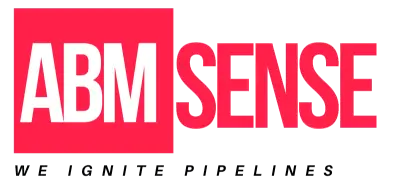What Is the Role of Sales Enablement in Demand Generation?
What Is the Role of Sales Enablement in Demand Generation? This question is increasingly relevant in today’s competitive market. Sales enablement strategies can significantly bolster demand generation efforts and drive revenue growth. By aligning marketing and sales teams, organizations can create a cohesive approach to nurturing leads and converting them into customers.
Understanding Sales Enablement
Sales enablement means equipping sales teams to engage effectively with prospects and customers. It concerns the processes, content, and tools that sales teams use and that helps them engage with prospects and customers. Forrester does studies on all kinds of things, and lately, they have been studying sales enablement. They say that if you implement sales enablement well, it will really do something for your sales.
- Content Creation: It is important to provide the sales team with content that is directly related to the pain points of the buyers. This content development leads to better conversations with the buyers.
- Training Sessions: Ongoing training keeps sales representatives in the loop regarding product features and market developments.
- Integrating technologies, such as customer relationship management (CRM) systems, can help simplify the sales process.
Additionally, effective sales enablement guarantees that the sales force can react to client demands with both speed and precision. These are trust-building behaviors, and trust is a requirement for moving a prospect through the buyer’s journey.
What Is the Role of Sales Enablement in Demand Generation?
Sales enablement is a bridge between marketing and sales. When it comes to demand generation, particularly the activities that lead to conversion of prospects into leads, and ultimately, into sales, sales enablement is an important part of “the framework” that helps to convert leads generated by demand generation activities into closed opportunities. The framework includes not only sales enablement but also the activities of the lead development team (LDRs).
- Improved Communication: Sales enablement boosts the communication between the sales and marketing teams, ensuring that those two departments are aligned in their objectives. Both kinds of teams are better served when they work toward the same ends.
- Sales teams can qualify leads more efficiently and can focus on high-potential opportunities if they are provided with the right information.
- Sales enablement allows sales reps to personalize their outreach based on the insights gleaned from marketing. The more they know about a prospect, the better they can engage that prospect.
The sales team has access to the customer relationship management (CRM) system and can see the prospect’s history with the company. They can see which marketing efforts the prospect engaged with and when and can use this information to tailor their messaging even more.
Building a Framework for Success
If you want to take your demand generation strategy up a notch and add in sales enablement as an enhancing layer, the first step is to create a solid framework. How do you do that? Here are some steps to consider.
- Evaluate Current Capabilities: Before implementing any strategy, assess the current state of both sales and marketing efforts.
- Identify Objectives: Clearly state the sales enablement objectives for which you are striving. They might be as follows: Increase conversion rates. Shorten sales cycles. Improve lead quality.
- Put money into technology: Put in place tools that make sales enablement possible, like systems for managing customer relationships and platforms for sales intelligence.
- Ongoing Training: Ensure programs for continuous training of teams are in place and up to date, keeping all personnel abreast of best practices and new materials.
As per Sales Hacker, having a sales enablement function in place makes companies twice as likely to hit 50% or more significant increases in revenue year-over-year (the other 50% makes companies with no sales enablement at all). This is absolutely crucial to understand as an upshot of the recent conversation with Dr. Simon. Clearly, having a sales enablement function is radically effective.
Examples of Sales Enablement in Action
To delve deeper into the function of sales enablement in demand generation, take a look at these instances:
- A platform for sales enablement was used by a technology startup to give its sales representatives content templates that were personalized for them. Consequently, the conversion rate from lead to customer rose by 30 percent in the half-year period that followed.
- A sizable company initiated a quarterly alignment meeting with sales and marketing. The meeting’s purpose was to allow the two groups to better understand and appreciate the customer personas they were working with and the problems those personas had that led them to buy. Not only was that a good first step in a customer-oriented approach, but understanding those problems (and the conditions under which those problems would get solved) led to a 25% increase in the number of qualified leads generated by the company’s marketing campaigns.
These examples show how powerful sales enablement can be in driving demand generation, resulting in clear and tangible success when it comes to converting leads into committed customers.
Conclusion: The Synergy of Sales and Demand Generation
In conclusion, knowing what the role of sales enablement in demand generation is makes way for an organization to understand how its sales and marketing teams can work better together.
When it comes to converting leads into paying customers, the bridge between the sales and marketing teams can’t be just a solid connector. It must be as seamless as the two teams must convert leads as they pass through them toward that end goal.
Explore More on us
Discover insightful blogs on our Blogging Space, check our WordPress Visitor Identification Plugin, and learn more about Account-Based Marketing.


